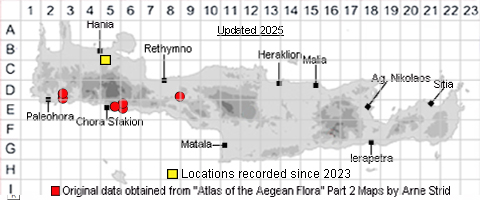
SPECIES DESCRIPTION
CHAENORHINUM RUBRIFOLIUM
Family and Genus:- See- PLANTAGINACEAE
Common Names:- None
Homotypic Synonyms:- Antirrhinum rubrifolium. Linaria rubrifolia.
Meaning:- Chaenorhinum (Gr) Gaping-nose (analogy with Antirrhinum)
Rubrifolium (L) With red leaves.
General description:- Annual, erect ± glandular-pubescent plant.
Stems:-
1) 10-35 cm tall. sparingly branched.
Leaves:-
1) Up to 20(-40) x 9(-15) mm, ovate to obovate.
a) lowest, usually forming a basal rosette. broadly ovate, conspicuously reddish-
purple beneath.
b) upper, smaller and green on both surfaces.
Flowers:-
1) Inflorescence, few-flowered.
2) Pedicels, up to 16(-25) mm in fruit, erecto-patent.
3) Calyx, 4-7 mm;
a) lobes, linear-spathulate, accrescent, almost leaf-like in fruit.
b) 1-1·5 mm wide.
4) Corolla, cream to bluish-purple outside, whitish inside.
a) spur, conical, acute, usually shorter than tube.
b) lips, more or less approximated.
Fruit:-
1) Caspule, 3-6 mm, subglobose, much shorter than the calyx.
2) Seeds, 0·4-0·5 mm.
Key features:-
1) Leaves, reddish-purple beneath.
2) Calyx lobes, accrescent, almost leaf-like in fruit.
3) Corolla spur, conical, acute.
Habitat:- Rocky and gravelly slopes with open scrub,coarse calcarious scree in dry
streambeds, fallow fields (0)200-600 m.
Distribution:- A few records from the Aegean area - Widespread and scattered in
the Mediterranean region. Rare on Crete known only from a few locations in the
west.
Flowering time:- April to mid June
Photos by:- A. N. Other
